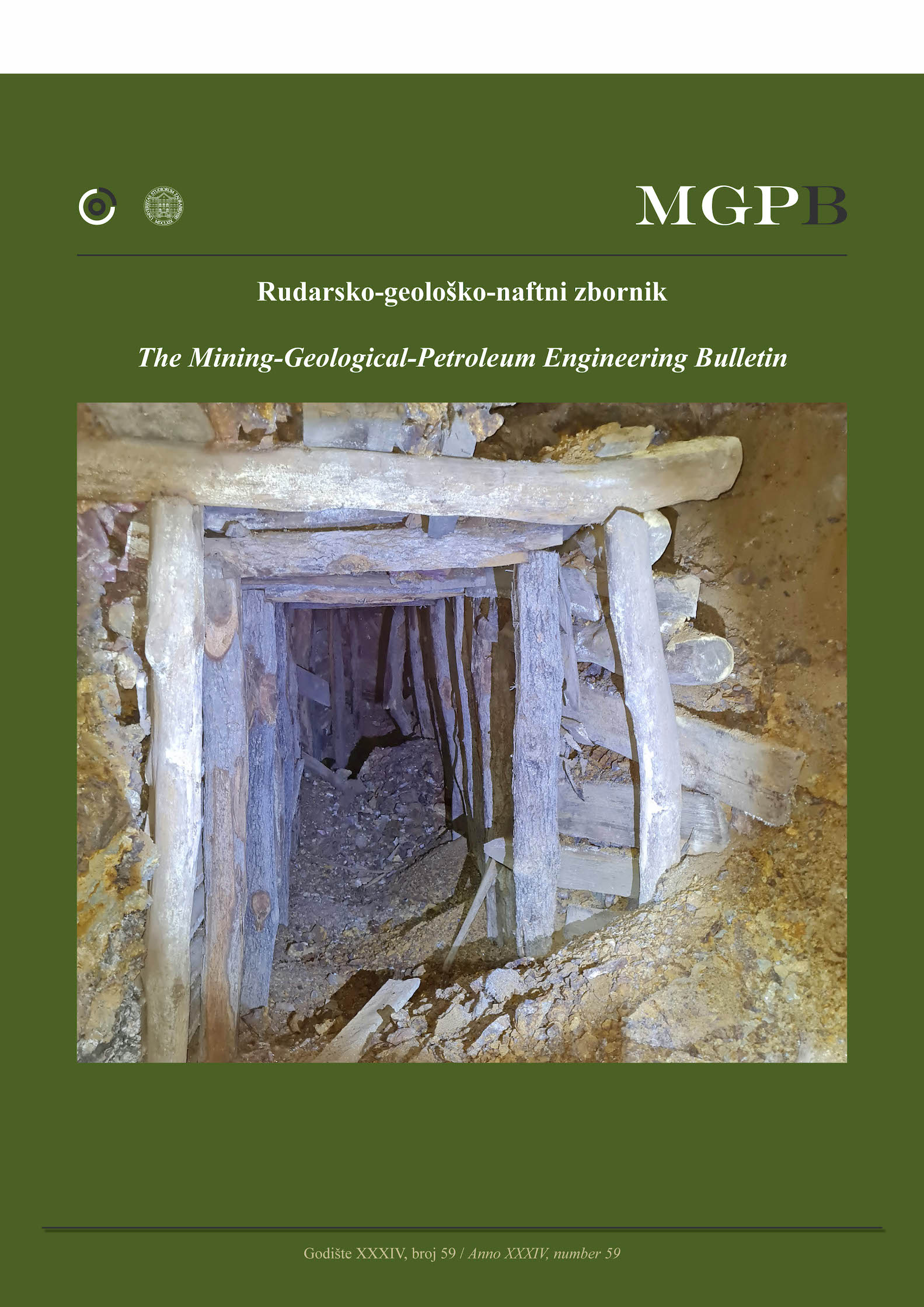Controlling grinding process parameters using central composite design to reduce slimes in phosphate ore beneficiation
DOI:
https://doi.org/10.17794/rgn.2022.3.11Keywords:
phosphate slimes, ball mill, central composite design optimization, optimization, grinding operationAbstract
Ultrafine particles resulting from the grinding operation of phosphate ore cause problems of air pollution, and of the beneficiation plants particularly, flotation cells and filtration units. The particles of less than 38 μm are one of the undesirable consequences of the phosphate ore beneficiation stage, where fine or ultrafine powder accounts for 10–30 percent of phosphate quantities and is regarded as a loss. Furthermore, maintaining additional amounts of phosphate by reducing these particles will provide several benefits, including minimizing the environmental implications of slime disposal and enhancing the economic impact of the phosphate ore beneficiation process. This paper aims to maximize the useful phosphate particles and reduce the slime instead of doing more efforts in traditional techniques. This goal might be attained by increasing the percent of particles of the desired size of the phosphate (Target) during the grinding process by determining the optimal operational conditions, that will reduce the amount of slime. The central composite design (CCD) is used to identify the number of experiments to be evaluated and to create a predictive model to be used for determining the optimal operation parameters. As a result of the optimization process, a maximum Target of 87.6% was obtained at grinding conditions t (5.1 min), v (42.6 %), s (81.2 %), and c (50.7 %). Where t, v, s, and c stand for grinding time, occupied volume of ball, rotational speed percent from critical speed (%) and solid concentration by volume (%) respectively.
Downloads
Published
How to Cite
Issue
Section
License
Copyright (c) 2022 authors and journal

This work is licensed under a Creative Commons Attribution 4.0 International License.
Creative Commons-BY
Authors who publish with this journal agree to the following terms:
In agreeing this form, you certify that:
- You read the ethical codex of the RGN zbornik available at journal web.
- You submitted work is your original work, and has not previously been published and does not include any form of plagiarism.
- You own copyright in the submitted work, and are therefore permitted to assign the licence to publish to RGN zbornik.
- Your submitted work contains no violation of any existing copyright or other third party right or any material of an obscene, libellous or otherwise unlawful nature.
- You have obtained permission for and acknowledged the source of any illustrations, diagrams or other material included in the work of which you are not the copyright owner.
- You have taken due care to ensure the accuracy of the work, and that, to the best of your knowledge, there are no false statements made within it.
- All co-authors of this submitted work are aware of, and in agreement with, the terms of this licence and that the submitted manuscript has been approved by these authors.
Publication licence
You retain copyright in your submitted work, according to journal license policy (CC-BY). By signing this form you agree that RGN zbornik may publish it under the publication licence. In summary the licence allows the following:
Anyone is free:
- To copy, distribute, display, and perform the work.
- To make derivative works.
Under the following conditions:
- The original author must always be given credit.
- The work may not be used for commercial purposes.
- If the work is altered, transformed, or built upon, the resulting work may only be distributed under a licence identical to this one.
Exceptions to the licence
In addition to publishing the work printed under the above licence, RGN zbornik will also enable the work to be visible online.
The journal editorial can change the licence rules anytime but it cannot retroactively restrict author(s) rights.


